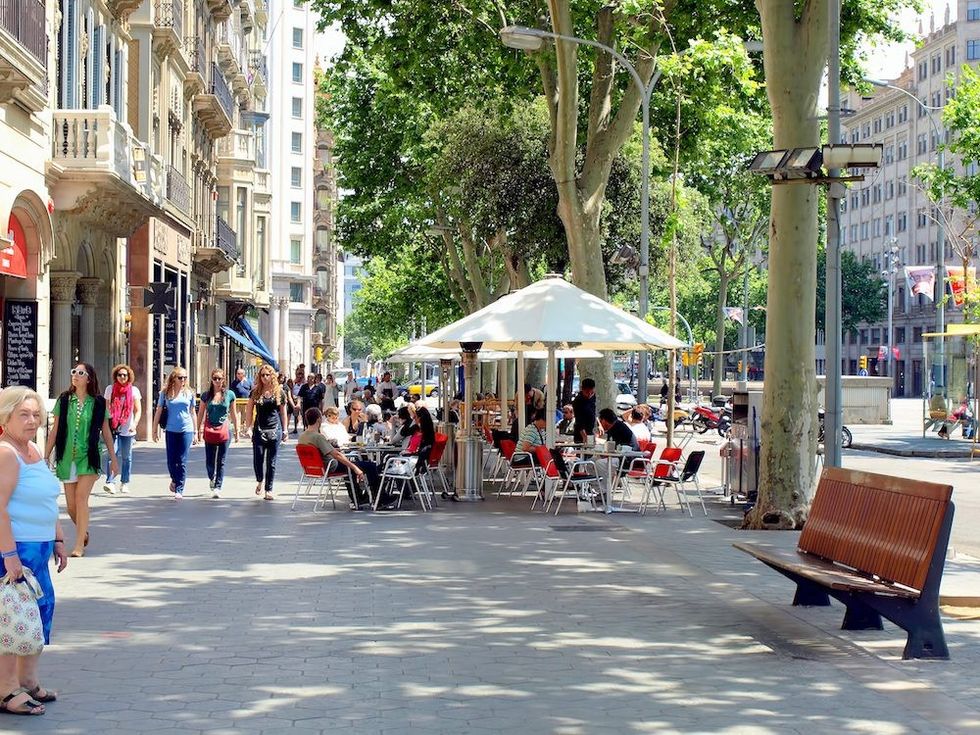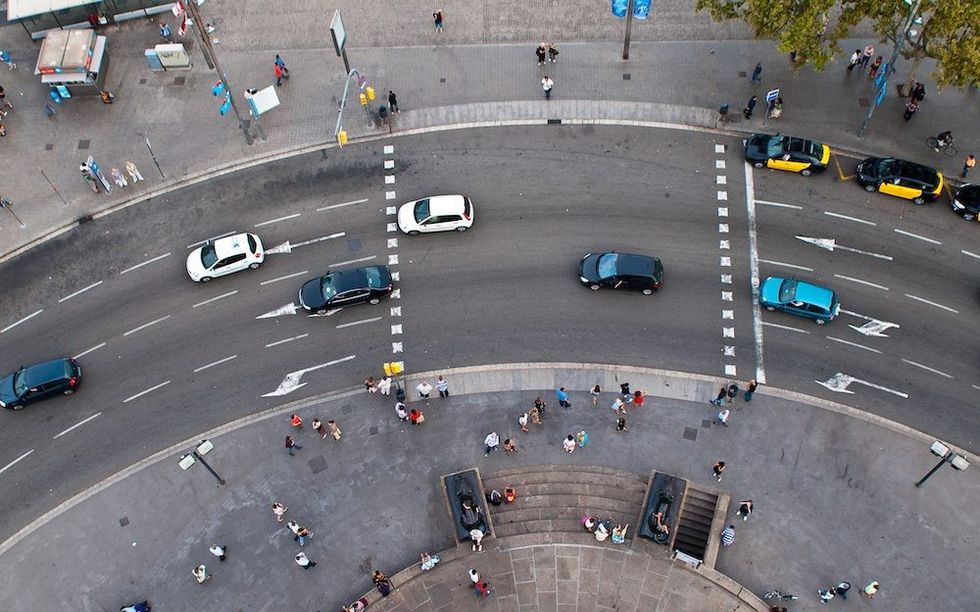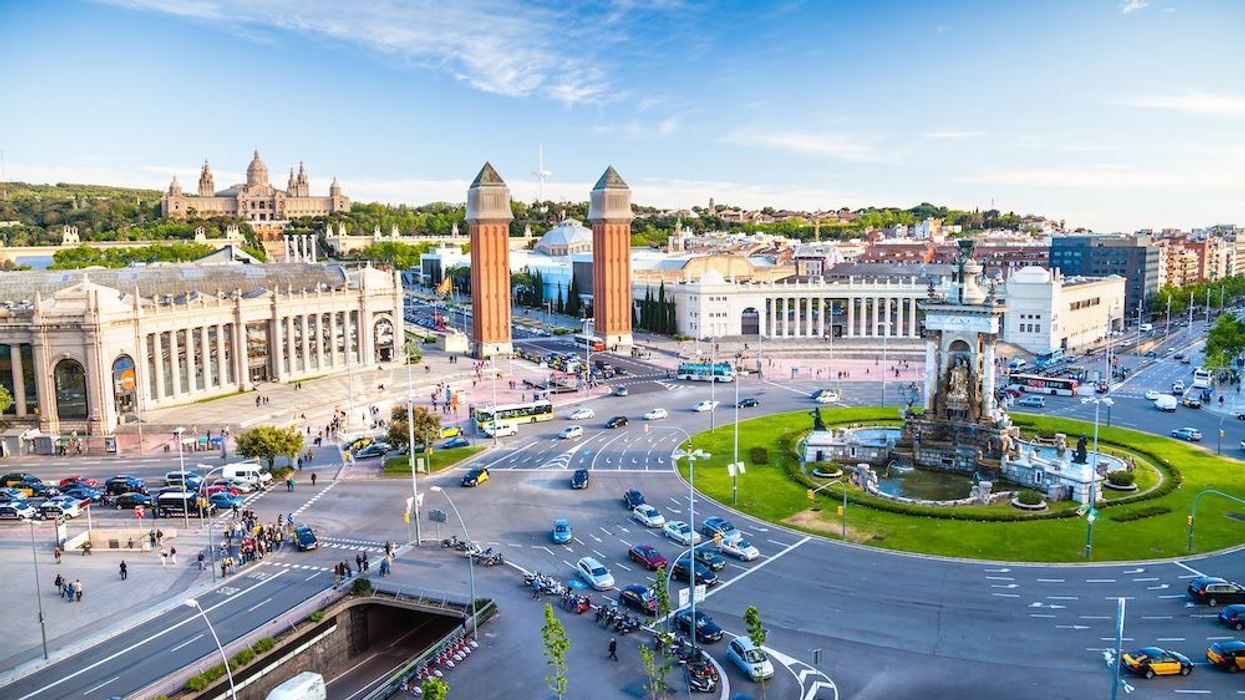No one would ever accuse Barcelonans of not loving their cars. Indeed, the city has the highest rates of auto-ownership in Europe. Though they’re not hooked on pick-up trucks and SUVs like North Americans, four wheels are good enough. But as anyone who has spent even a few days in the Catalan capital knows, the space given to vehicular traffic doesn’t come at the expense of pedestrians, cyclists or, even more remarkably, trees, benches, buses, playgrounds or parking.
Many rightly lament Barcelona’s poor air quality and the growing pressure exerted by the car-dependent hordes, but for a city like Toronto, the lesson is that urban greatness is not a question of either/or, car/pedestrian, public transit/private vehicle. Urban greatness is achieved by embracing both, or rather, all. Where official Toronto thinks in binary terms of this or that, one or the other, Barcelona has managed to reconcile a whole series of opposites into a complex but functional whole that accommodates all involved.

To wander down the Passeig de Gracia, one of Barcelona’s most emblematic and spectacular boulevards, is to experience city life of a sort that is impossible here. It helps, of course, that when the great pioneer of progressive urban planning, Ildefons Cerda, laid out the expansion of Barcelona in the 19th century, he did so with streets wide enough to be shared by a vast array of users and uses. The Passeig, for example, is 61 m (200 ft) wide. In Ontario, that sort of width is reserved for expressways, highways and the like. Sidewalks on the Passeig are 23 m (70 ft) wide. Even then, they can barely cope with the huge numbers of pedestrians on hand to enjoy the parade.
By contrast, traffic lanes in Toronto are typically between 3 and 3.5 m.
Though Toronto’s sidewalks vary, they generally measure from a miserly 1.8 to 2.1 m (6 to 6.6 ft).
Clearly, local standards are mean in comparison to Barcelona’s. In favouring cars over pedestrians, Toronto has compromised the very quality by which it has chosen to be known, namely its liveability. The false god of convenience has Toronto well in its grip.

But since we can’t turn back the clock, we’re stuck with what we have. Even so, there are options. Recently, for instance, there has been much discussion about Yonge Street north of Sheppard to Finch. Let’s be honest, that sad stretch of Toronto’s main drag will never be the Passeig de Gracia, but it can be a whole lot better than it is. Despite objections from the highest levels -- including former mayor John Tory and his council allies -- the road could be transformed into a boulevard, admittedly modest in scope but nevertheless able to accommodate cars and other forms of mobility. The fact is that in its current form, Yonge here is anti-democratic, even anti-human, in its insistence not just on the primacy of all things vehicular, but also its denial of the two-legged. Pedestrians are viewed simply as obstacles, usually in the way.
Yet today we can see that it’s these very pedestrians that give Yonge Street its wonderful vitality. They have brought the neighbourhood to life despite the efforts of city planners and politicians to keep them as far away as possible. Against all odds, Yonge between Finch and Sheppard has evolved into a diverse urban centre that supports a wide range of restaurants, cafes, and shops.
Then there’s Queen’s Quay between Parliament and Bathurst. Again, today it’s not up to much. The LRT line east of Yonge promised more than a decade ago still hasn’t appeared, but Waterfront Toronto has done a decent job enlivening what was, until recently, an industrial wasteland. But this is a neighbourhood deep in transition, and only if the agency manages to hold out against the bean-counters, bottom-feeders and box-tickers at City Hall, will the potential to make Queen’s Quay something memorable and truly urban survive.
The essence of the Barcelonian vision is, of course, the desire to create a city that is open, attractive, and accessible to all. That includes, but is not limited to, drivers. The idea isn’t that Torontonians should step out of their cars once and forever. It’s too late for that; that’s not going to happen. The more crucial part of the puzzle is that drivers and their political enablers grasp that it’s time to share the city. The decades of vehicular hegemony are drawing to a close. Toronto has been slow to respond, but it’s never too late. As the example of Barcelona makes clear, the more the merrier.





















